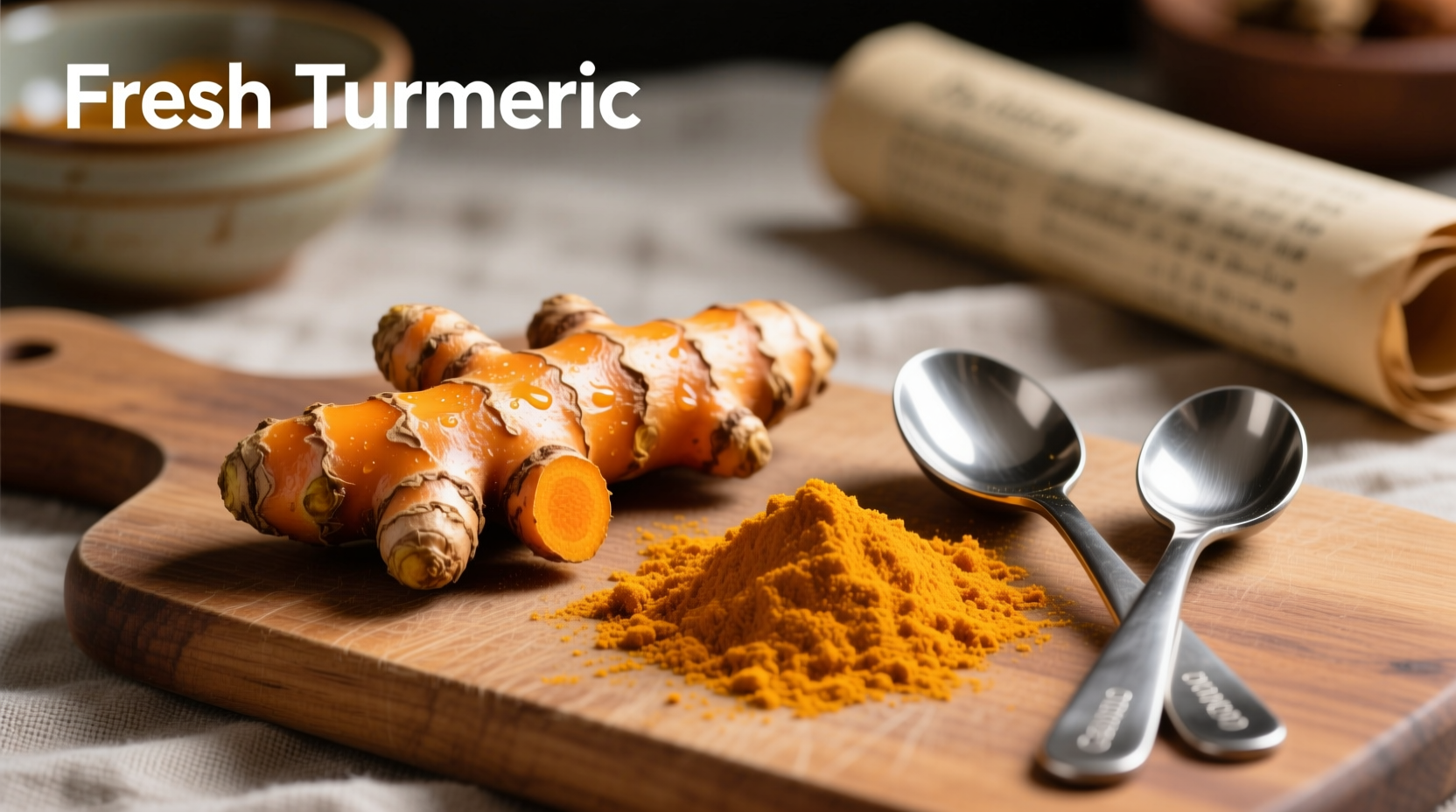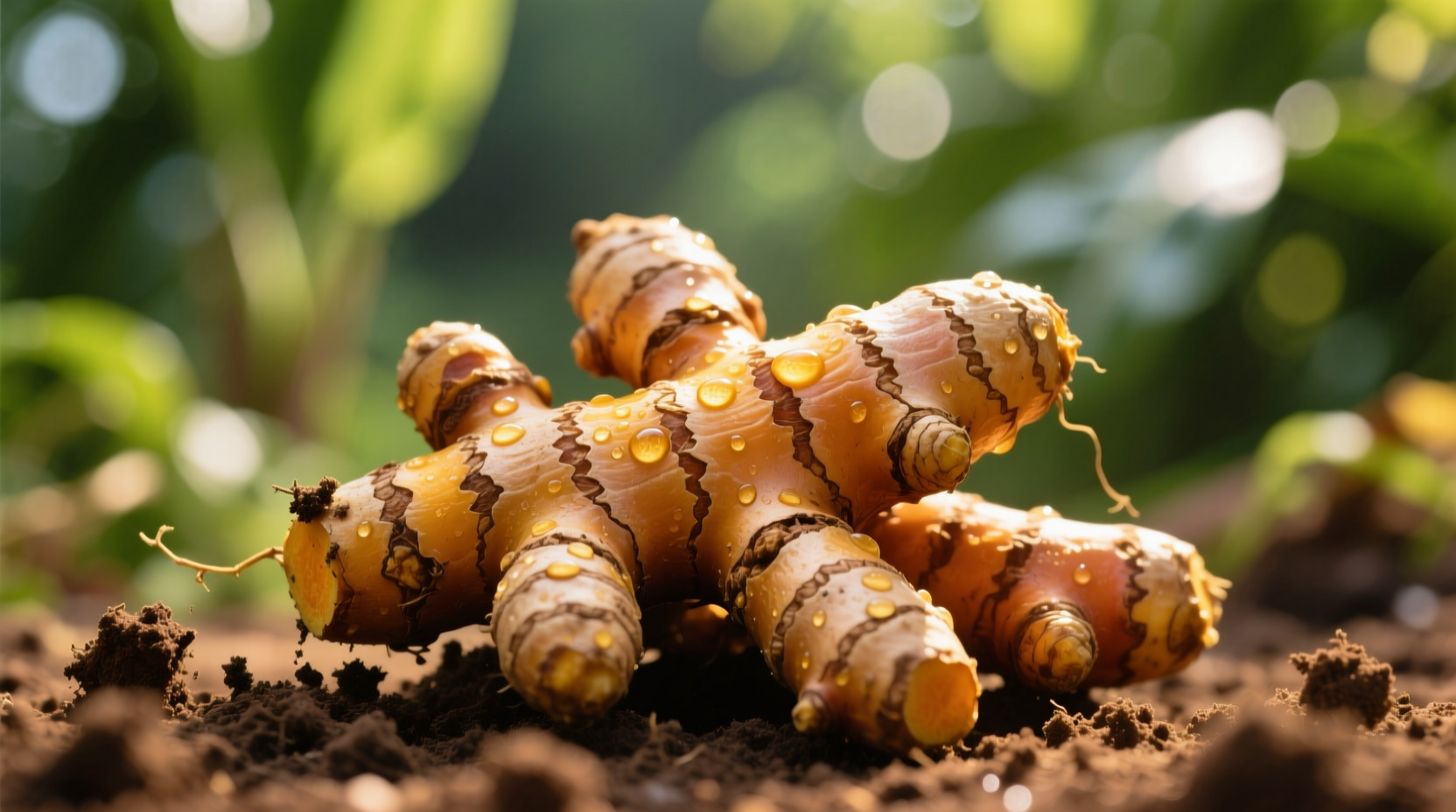Unlock the full potential of turmeric in your kitchen and wellness routine with this science-backed guide. You'll discover exactly how to select, store, and prepare turmeric to maximize both flavor and potential health benefits—plus avoid common mistakes that waste this valuable spice.
Understanding Turmeric's Unique Properties
Turmeric (Curcuma longa) delivers a distinctive earthy, slightly bitter flavor with warm peppery notes. The active compound curcumin gives turmeric its characteristic yellow color and has been studied for potential anti-inflammatory properties. According to the National Center for Complementary and Integrative Health, curcumin's bioavailability increases significantly when combined with black pepper and healthy fats—a crucial detail for maximizing benefits (nccih.nih.gov).
| Turmeric Form | Best Culinary Uses | Storage Duration | Flavor Intensity |
|---|---|---|---|
| Fresh root | Curries, juices, grated into dressings | 2-3 weeks refrigerated | ★★★★☆ (Bright, peppery) |
| Ground powder | Dry rubs, spice blends, baked goods | 6-12 months in dark container | ★★★☆☆ (Mellow, earthy) |
| Supplement (standardized) | Wellness routines (consult healthcare provider) | Check expiration date | N/A |
Mastering Culinary Applications
Professional chefs maximize turmeric's potential through strategic pairing and preparation techniques. Toasting ground turmeric in oil before adding liquids releases its essential oils, creating deeper flavor complexity. For fresh turmeric root, grating directly into hot liquids preserves volatile compounds better than pre-mincing. The USDA FoodData Central confirms that turmeric contains significant manganese and iron, making it both flavorful and nutrient-dense (fdc.nal.usda.gov).

Avoiding Common Preparation Mistakes
Many home cooks waste turmeric's potential through improper handling. Never boil turmeric for extended periods—heat above 180°F (82°C) degrades curcumin. Instead, add it during the last 10-15 minutes of cooking. When using fresh turmeric, always peel the thin skin with a spoon rather than a knife to prevent oxidation. For maximum color impact in rice dishes, bloom turmeric powder in warm oil before mixing with grains.
Evidence-Based Wellness Considerations
While turmeric isn't a medicine, research published in Nutrients journal indicates that regular culinary use may support wellness routines. The key is consistent consumption with proper pairing: 1/4 teaspoon turmeric with 1/8 teaspoon black pepper and 1 teaspoon healthy fat (like coconut oil) creates optimal absorption conditions. Note that culinary amounts differ significantly from therapeutic doses studied in clinical trials—consult healthcare providers before using turmeric for specific health concerns.
Regional Usage Patterns and Cultural Context
Turmeric's application varies dramatically across global cuisines. In Indian cooking, it's foundational in curry bases and must be bloomed in oil first. Thai cuisine uses fresh turmeric root in soups like kaeng som for its brighter flavor. Middle Eastern dishes incorporate turmeric sparingly in rice pilafs for color without overwhelming other spices. Understanding these cultural contexts prevents flavor imbalances in fusion cooking.
Storage and Selection Guidelines
Choose firm, plump turmeric roots with smooth skin and no soft spots. For powder, select brands with harvest dates—freshness dramatically impacts potency. Store fresh roots in a paper bag in the refrigerator's crisper drawer, not sealed containers where moisture causes spoilage. Ground turmeric maintains potency longest when stored in opaque containers away from light and heat sources.
Practical Daily Integration Strategies
Start small: add 1/8 teaspoon turmeric to scrambled eggs or morning smoothies. For golden milk, simmer 1/2 teaspoon turmeric powder with 1/4 teaspoon cinnamon, a pinch of black pepper, and 1 cup milk (dairy or plant-based) for 5 minutes—never boiling. When making salad dressings, whisk turmeric with mustard first to prevent clumping. These simple techniques ensure consistent incorporation without overwhelming other flavors.
Frequently Asked Questions
How much turmeric should I use daily for culinary purposes?
For regular cooking, 1/4 to 1/2 teaspoon of ground turmeric per serving provides optimal flavor without overpowering. When using fresh root, 1/2 to 1 inch grated equals approximately 1/4 teaspoon powder. Culinary use focuses on flavor enhancement rather than therapeutic dosing.
Why does turmeric sometimes stain surfaces yellow?
Turmeric contains curcuminoids that act as natural dyes. Prevent stains by cleaning cutting boards and utensils immediately with soapy water. For stubborn stains, rub with lemon juice or baking soda paste before washing. Always use glass or ceramic containers for turmeric storage to prevent discoloration.
Can I substitute turmeric powder for fresh root?
Yes, with adjustments: 1 inch fresh turmeric root equals approximately 1/4 teaspoon ground turmeric. Remember that fresh turmeric has brighter, more peppery notes while powder offers deeper earthiness. When substituting, add fresh turmeric earlier in cooking than powder to develop flavor fully.
Does cooking destroy turmeric's beneficial compounds?
Prolonged high heat degrades curcumin, but proper cooking actually enhances bioavailability. Research in the Journal of Food Science shows that simmering turmeric in liquid for 10-15 minutes increases soluble curcuminoids by 30%. Avoid boiling turmeric for more than 15 minutes and always pair with black pepper and fat for optimal results.











 浙公网安备
33010002000092号
浙公网安备
33010002000092号 浙B2-20120091-4
浙B2-20120091-4